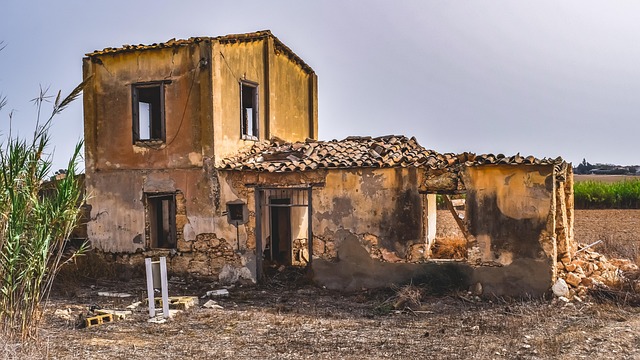In regions prone to severe weather events, storm-proofing homes is essential for natural disaster readiness. Using durable materials like reinforced concrete and impact-resistant windows enhances structural integrity against high winds, heavy rainfall, and debris. Proper maintenance ensures these defenses remain effective, protecting properties, possessions, and occupants' peace of mind during unpredictable weather events. Adopting eco-friendly solutions contributes to both sustainability and enhanced resilience in the face of increasing global storm intensity.
In the face of increasingly severe weather events, preparing homes for natural disasters through storm-proofing is crucial for community resilience. This article explores the importance of robust protection in vulnerable regions, highlighting common weaknesses in traditional construction that leave homes susceptible to damage. We delve into eco-friendly and durable materials offering enhanced resistance, providing practical design insights for homeowners. Furthermore, maintenance tips ensure optimal performance, extending the lifespan of storm-proof enhancements for long-term natural disaster readiness.
- Understanding the Importance of Storm-Proofing in Natural Disaster Readiness
- Common Vulnerabilities in Traditional Home Construction
- Exploring Eco-Friendly and Durable Materials for Enhanced Resistance
- Practical Applications: Incorporating Durable Materials into Your Home Design
- Maintenance Tips to Ensure Longevity and Performance After Installation
Understanding the Importance of Storm-Proofing in Natural Disaster Readiness

In regions prone to severe weather events, storm-proofing homes is an essential aspect of natural disaster readiness. With increasing frequency and intensity of storms globally, ensuring your home can withstand such events is crucial for both safety and financial security. Storms, including hurricanes, tornadoes, and intense thunderstorms, can cause widespread destruction, making it vital for homeowners to protect their properties.
Proper storm-proofing measures not only safeguard lives but also preserve valuable possessions and significantly reduce repair costs. By investing in durable materials and robust construction techniques, residents can enhance their homes’ resilience against natural forces. This proactive approach to natural disaster readiness is a wise decision, ensuring peace of mind and a more secure future for all occupants.
Common Vulnerabilities in Traditional Home Construction

In traditional home construction, several vulnerabilities exist that make structures susceptible to significant damage during severe weather events, highlighting the importance of natural disaster readiness. One of the primary concerns is the use of materials that lack durability and resilience against high-speed winds, heavy rainfall, and flying debris—common elements in storms and hurricanes. Standard building components like wood framing, for instance, can easily succumb to strong winds, leading to structural failures and costly repairs.
Moreover, traditional homes often have weaknesses in their roofing systems, windows, and exterior walls. Roofs made of asphalt shingles are prone to tearing and lifting during intense storms, while single-pane windows may shatter, causing substantial interior damage. Exterior walls constructed with less robust materials can also suffer significant breaches, allowing water intrusion and exacerbating structural weaknesses. Addressing these vulnerabilities through the selection of durable materials is a critical step in enhancing natural disaster readiness for any home.
Exploring Eco-Friendly and Durable Materials for Enhanced Resistance

In the face of increasing natural disasters, preparing homes for potential storms and extreme weather events is more crucial than ever. One effective strategy involves exploring eco-friendly and durable materials that offer enhanced resistance to such challenges. These materials not only contribute to a more sustainable future but also provide long-lasting protection against harsh environmental conditions.
Natural disaster readiness requires innovative solutions that can withstand high winds, heavy rainfall, and other extreme weather phenomena. Incorporating durable materials like reinforced concrete, fiber cement siding, and impact-resistant windows offers substantial benefits. These options are not only designed to resist damage but also promote energy efficiency, reducing the overall environmental impact of construction while ensuring homes remain safe and secure during storms.
Practical Applications: Incorporating Durable Materials into Your Home Design

When designing or retrofitting a home for natural disaster readiness, incorporating durable materials is key to enhancing structural integrity and safeguarding against potential damage. Materials like concrete, steel, and brick have proven their worth in withstanding extreme weather conditions, making them practical choices for reinforcing exterior walls, roofs, and foundations. These options not only offer superior strength but also provide a solid defense against high-speed winds, flying debris, and intense impacts during storms.
Moreover, incorporating durable materials extends beyond the exterior. For example, using impact-resistant windows or hurricane shutters can significantly reduce the risk of glass shattering, preventing water intrusion and potential structural compromise. Similarly, selecting robust flooring options like concrete, tile, or engineered hardwood ensures interior spaces remain safe and dry during storms. These thoughtful applications contribute to a home’s overall resilience, offering peace of mind and protection for occupants during challenging natural disaster events.
Maintenance Tips to Ensure Longevity and Performance After Installation

Proper maintenance is key to ensuring your storm-proofed home remains a safe haven during natural disasters. After installation, regular upkeep is essential to maintain the integrity and performance of these durable materials. Inspect your home’s defenses – from impact-resistant windows to reinforced roofing – at least twice a year for any signs of wear and tear. Addressing small issues promptly prevents major problems down the line. Keep an eye out for loose fixtures, cracked seals, or damaged panels, repairing or replacing them as needed. Regular cleaning also plays a vital role in maintaining optimal performance. Remove debris from gutters and drains to prevent water damage during heavy storms. Keeping your storm-proofing well-maintained ensures it lives up to its purpose – protecting your home and family during unpredictable weather events.
In light of the increasing frequency and intensity of natural disasters, storm-proofing your home is no longer an option but a necessity for natural disaster readiness. By understanding common vulnerabilities and exploring eco-friendly, durable materials, homeowners can significantly enhance their homes’ resistance. Practical applications and proper maintenance ensure these materials provide long-lasting protection, making your home safer and more secure against harsh weather conditions. Investing in durable materials is a proactive step towards mitigating risks and safeguarding your sanctuary during uncertain times.
